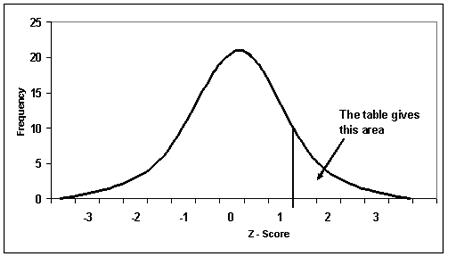Standard Score
The standard score (more commonly referred to as a z-score) is a very useful statistic because it (a) allows us to calculate the probability of a score occurring within our normal distribution and (b) enables us to compare two scores that are from different normal distributions. The standard score does this by converting (in other words, standardizing) scores in a normal distribution to z-scores in what becomes a standard normal distribution. To explain what this means in simple terms, let's use an example (if needed, see our statistical guide, Normal Distribution Calculations, for background information on normal distribution calculations).
Setting the scene: Part 1
A tutor sets a piece of English Literature coursework for the 50 students in his class. We make the assumption that when the scores are presented on a histogram, the data is found to be normally distributed. The mean score is 60 out of 100 and the standard deviation (in other words, the variation in the scores) is 15 marks (see our statistical guides, Measures of Central Tendency and Standard Deviation, for more information about the mean and standard deviation).
Having looked at the performance of the tutor's class, one student, Sarah, has asked the tutor if, by scoring 70 out of 100, she has done well. Bearing in mind that the mean score was 60 out of 100 and that Sarah scored 70, then at first sight it may appear that since Sarah has scored 10 marks above the 'average' mark, she has achieved one of the best marks. However, this does not take into consideration the variation in scores amongst the 50 students (in other words, the standard deviation). After all, if the standard deviation is 15, then there is a reasonable amount of variation amongst the scores when compared with the mean.
Whilst Sarah has still scored much higher than the mean score, she has not necessarily achieved one of the best marks in her class. The question arises: How well did Sarah perform in her English Literature coursework compared to the other 50 students? Before answering this question, let us look at another problem.
